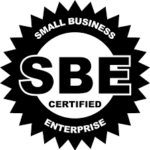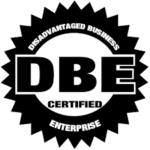In my previous article, Strategic Destruction, I revealed how many cities are not declining due to market forces or leadership failures alone—but by intentional design. That piece was a wake-up call, exposing the collusion, ingratiation rituals, and power silos that systemically block small business progress. But if Strategic Destruction was the diagnosis, this article is the prescription.
Strategic Destruction chronicled how cities suffocate innovation through bureaucratic inertia, cultural gatekeeping, and unspoken financial rites of passage. In contrast, Strategic Providence focused on how individuals harness resilience and intuition to create progress despite those barriers. Now, this article aims to close the loop: how can we resurrect our cities in ways that make entrepreneurship accessible, equitable, and powerful?

If you’re a small business owner fighting to get contracts, navigate outdated systems, or even just be seen—you’re not alone. The following five moves are not just policy ideas; they’re actionable strategies cities can deploy now to reverse the effects of strategic destruction.
1. Reclaim Public Procurement
The most immediate way to empower small business isn’t launching another grant—it’s changing who cities pay. Procurement is the overlooked lever of economic mobility. Right now, it’s rigged.
In 2023, over 95% of municipal contracts in major metro areas went to firms that had already received prior city business in the past five years.
As a small business, this means you’re competing in a closed loop. To break the cycle, cities must:
- Set aside procurement pools for first-time and underrepresented vendors
- Mandate competitive rebidding at the end of every contract cycle
- Launch real-time dashboards showing contract allocation by business age, owner demographics, and industry
If even 30% of contracts in your city went to businesses under five years old, the market would immediately become more dynamic, innovative, and inclusive.
2. Fund the Fringe
Cities love to talk about inclusion, but their funding flows tell a different story. Too often, resources are funneled to the familiar: large institutions, legacy nonprofits, and businesses with deep insider connections.
Black women are the fastest-growing group of entrepreneurs in the U.S., yet receive less than 0.3% of venture capital.
Here’s how cities can practically redirect capital:
- Launch microgrant programs targeted at startups under two years old
- Match private capital with public equity stakes in overlooked sectors
- Incentivize community banks to lend based on business potential, not legacy creditworthiness
If you’re on the edge of innovation but outside traditional networks, these strategies open real doors.
3. Dismantle the Velvet Ropes
In some cities, success is less about what you do and more about who you know. From paying to sponsor galas to joining insider organizations, many small businesses are forced into performative rituals to gain access.
A Saulsberry Group analysis found that in some mid-sized cities, the cost of “being seen” by the right stakeholders can exceed $15,000 annually.
To eliminate these hidden tolls:
- Ban exclusive pay-to-play events as qualifying criteria for city-sponsored programs
- Audit and open public-private partnerships to include small and emerging firms
- Tie access metrics (number of first-time grantees, newcomers to ecosystems) to public and private funding KPIs
Let’s level the playing field. Your budget—or your circle—shouldn’t determine your shot.
3. Dismantle the Velvet Ropes
In some cities, success is less about what you do and more about who you know. From paying to sponsor galas to joining insider organizations, many small businesses are forced into performative rituals to gain access.
A Saulsberry Group analysis found that in some mid-sized cities, the cost of “being seen” by the right stakeholders can exceed $15,000 annually.
To eliminate these hidden tolls:
- Ban exclusive pay-to-play events as qualifying criteria for city-sponsored programs
- Audit and open public-private partnerships to include small and emerging firms
- Tie access metrics (number of first-time grantees, newcomers to ecosystems) to public and private funding KPIs
Let’s level the playing field. Your budget—or your circle—shouldn’t determine your shot.
4. Innovate the Bureaucracy
For many entrepreneurs, the biggest barrier isn’t competition—it’s red tape. Cities still operate with 20th-century systems in a 21st-century economy. Small business owners are losing time, momentum, and capital while waiting for approvals.
Tulsa, Oklahoma launched a digital permit portal that cut wait times in half. Business registrations surged 38% the following year.
This is the kind of transformation that’s possible. Cities can:
- Introduce rapid-launch licensing programs for businesses under five employees
- Develop AI-powered help desks to support founders through compliance
- Appoint Chief Startup Officers to advocate and streamline services for entrepreneurs
The message to local entrepreneurs should be simple: the city is your ally, not your obstacle.
5. Build Power Alternatives, Not Just Reforms
Reform is not enough. Power silos—those entrenched groups that control capital, influence, and narrative—must be directly challenged. If you’re waiting for a seat at a table built to exclude you, you’re already behind.
In Richmond, VA, Black entrepreneurs created their own economic zone complete with mentorship, capital, and shared services. It outperformed legacy districts.
To build alternatives:
- Fund independent chambers and coalitions that reflect the real entrepreneurial base
- Support community venture studios and accelerators that operate outside old networks
- Invest in leadership development for next-gen civic and business influencers
The goal isn’t to fix old systems. It’s to create better ones.
⚙️ Resurrection Index: A Scorecard for City Renewal
Here’s how you measure true progress:
| Category | Metric to Track | Target Outcome |
|---|---|---|
| Procurement Equity | % of new vendors receiving public contracts | 25%+ |
| Inclusive Capital Access | VC / loan approvals for marginalized founders | Year-over-year growth of 10%+ |
| Bureaucracy Speed | Avg. days to license approval | < 30 days |
| Access Democratization | Ratio of funded businesses with no legacy ties | > 50% |
| Power Structure Diversification | # of new orgs seeded in civic ecosystem | 3–5 per year |
Cities should publish these metrics quarterly. If the needle isn’t moving, the system isn’t changing.
Final Word: Build for the Future, Not the Familiar
Cities don’t need more strategic plans—they need strategic courage. The path forward isn’t paved with nostalgia, but with boldness. If you’re a small business owner, demand these changes. If you’re a policymaker, lead them.
Reverse the destruction. Fund the future. Let cities become launchpads, not museums.



